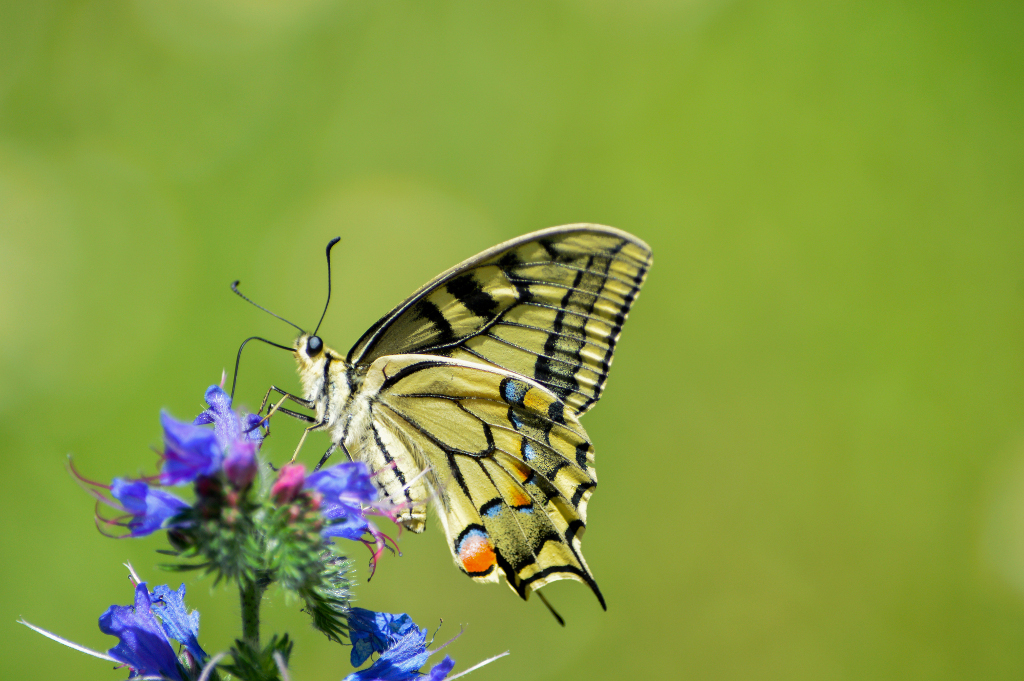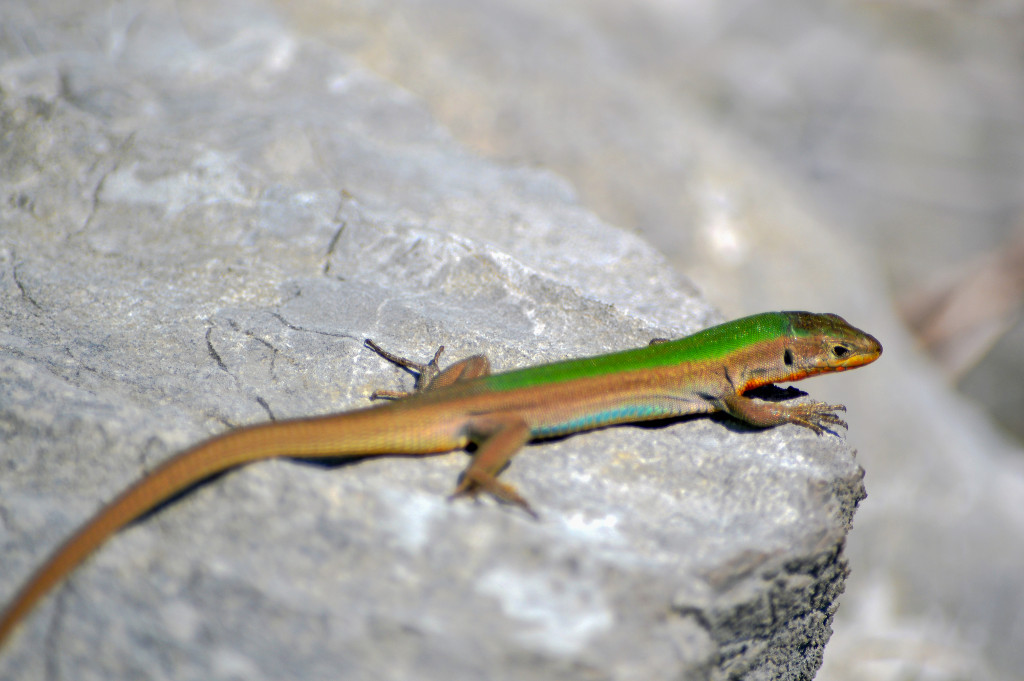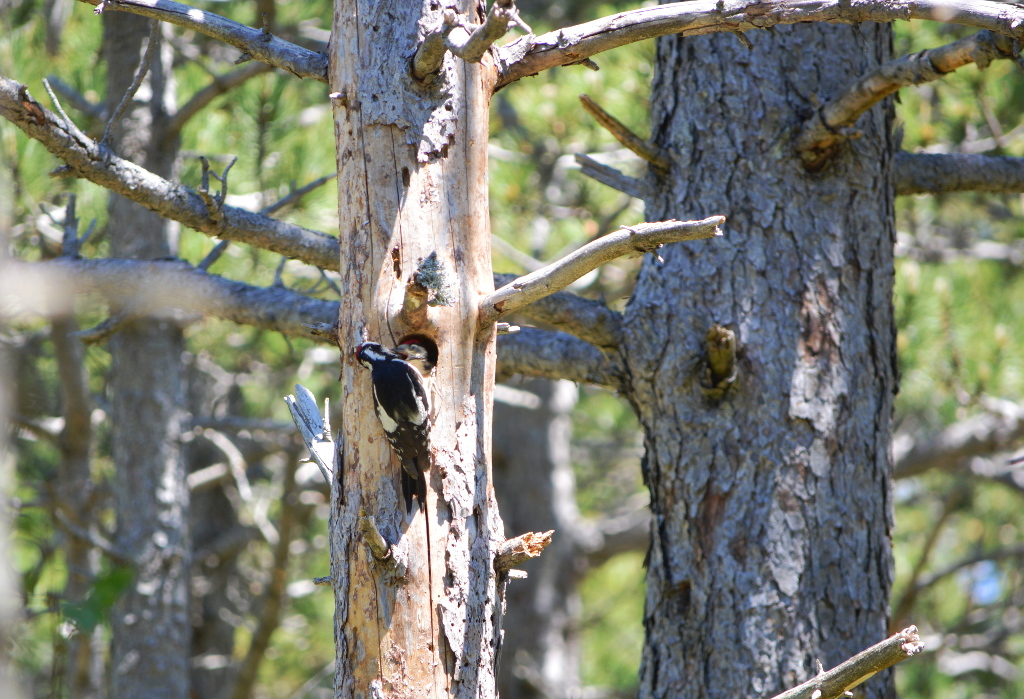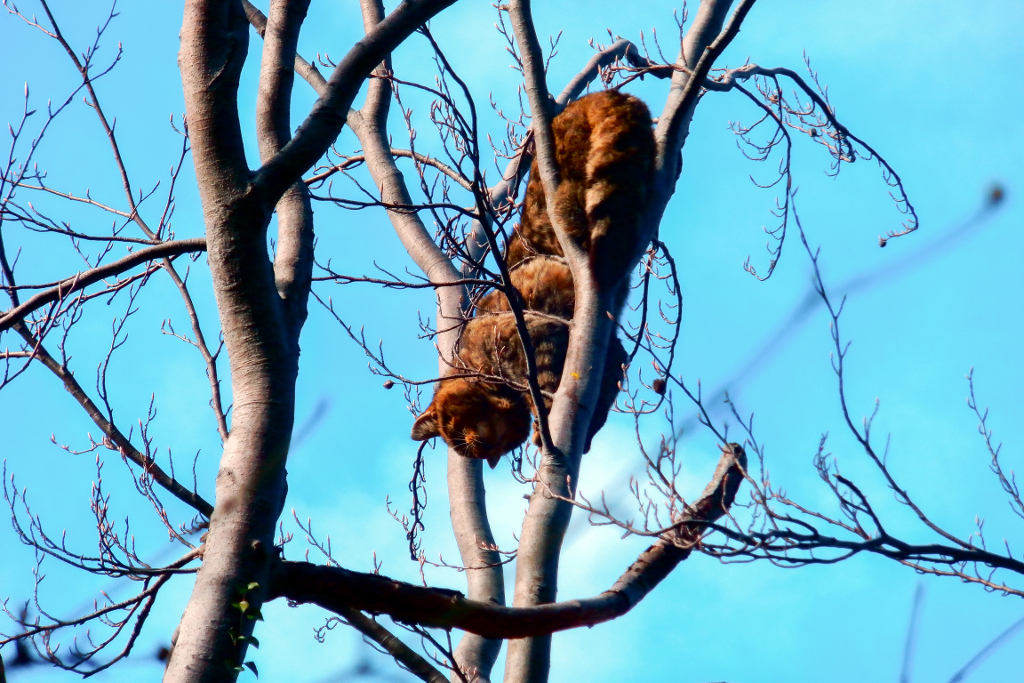The diverse habitats in Paklenica and the vertical stratification provide a good home to diverse fauna.
There is relatively little data on invertebrates in the Park. Most of the known invertebrate species belong to groups that are attractive to visitors, such as butterflies. Although the diurnal butterfly fauna has been explored, nocturnal butterflies are virtually unknown. The easiest species to observe is the largest variety of butterfly in the Croatian fauna – the Giant Peacock Moth (Saturnia pyri). More than 100 species of diurnal butterflies have been recorded in the Park, the most numerous being the representatives of the Gossamer winged butterflies (Lycaenidae) genus. The largest diurnal butterflies are the Scarce Swallowtail (Iphiclides podalirius) and Swallowtail (Papilio machaon). The high-mountain meadows are also inhabited by one of the most beautiful butterflies, the Apollo (Parnassius apollo).
 Swallowtail (Papilio machaon)
Swallowtail (Papilio machaon)
31 amphibian and reptile species have been recorded here, of which 11 snake species. The most common ones in the Park are the non-poisonous Balkan Whip Snake (Hierophus gemonensis), Leopard snake (Zamenis situla), Aesculapian snake (Zamenis longissimus). The Nose-horned Viper (Vipera ammodytes) and the very rare Orsini’s viper (Vipera ursinii macrops) are the only poisonous snakes in the area.
 Dalmatian Wall Lizard (Podarcis melisellensis)
Dalmatian Wall Lizard (Podarcis melisellensis)
Birds are the most numerous group of vertebrates, with 260 species recorded to date. The avifauna is represented by 165 species of nesting birds found in the Park area and the rest are recorded in the near surroundings. The nesting bird group includes a community of birds inhabiting rocks and cliffs in the canyons of Velika Paklenica and Mala Paklenica, with 24 bird species. The most abundant populations form the Rock Nuthatch (Sitta neumayer) and Blue Rock Thrush (Monticola solitarius).
Special value is added to the Park by the endangered and rare bird species such as the Golden Eagle (Aquila chrysaetos), Peregrine Falcon (Falco peregrinus), Short-toed Eagle (Circaetus gallicus), and Goshawk (Accipiter gentilis). As for owls, seven species have been recorded in the Park. The most numerous ones are Eurasian Tawny Owl (Strix aluco) and Scops Owl (Otus scops), while the largest European owl, the Eagle Owl (Bubo bubo) regularly nests in the canyons of Velika Paklenica and Mala Paklenica.
Forest areas are rich with woodpeckers, the rarest among them being the White-backed Woodpecker (Dendrocopos leucotos) and Middle Spotted Woodpecker (Dendrocopos medius). Three-toed Woodpecker (Picoides tridactylus) was recorded only in 2008 and 2009 when the population of bark beetles exploded inside the trunks of burnt pine trees
Until late 1999, the Eurasian Griffon (Gyps fulvus) was represented by three couples. Unfortunately, a decrease in the number of cattle in Velebit and increasingly frequent attempts to poison predators, especially wolves, contributed to its extinction in the Park.

Mammals are represented by 53 species in the Paklenica National Park. Large species found in the Park include the Roe Deer (Capreolus capreolus), Red Deer (Cervus elaphus), Chamois (Rupicapra rupicapra) and Wild Boar (Sus scrofa). Carnivores inhabiting the Park include Fox (Vulpes vulpes), Wild Cat (Felis sylvestris), the Beech Marten (Martes foina), Least Weasel (Mustela nivalis) and all of the three large carnivores-the Brown Bear (Ursus arctos), Wolf (Canis lupus), Lynx (Lynx lynx),
 Wild Cat (Felis sylvestris)
Wild Cat (Felis sylvestris)
Underground wildlife
To most species, the underground is an extreme habitat where life is not possible. Nevertheless, a relatively small number of species had fully adapted to the such habitat.
There are no autotrophic organisms (plants) underground, so the food chains are shorter. That is why there are no animals feeding on plants in caves. The organic substance required to sustain life comes from the surface pulverized or melted in water and underground torrents. In many semi-caves of Paklenica National Park, the organic substance derives from remains of cattle feces the former residents used as a shelter from rain and bora (for example, the caves of Mokrača, Šupljarka and Lukčeva).
True underground animals that spend their entire lives underground are called troglobites. In the absence of light in their construction, changes have occurred in relation to aboveground animals, so they normally have no pigment or eyes. That is why new adaptations develop, such as the sense of touch (long tentacles, body hair), the sense of moisture, as well as various forms of chemosensors.

(Troglophilus cavicola)
Two types of habitat are the most significant for the underground – land and water. In addition to small lakes and fast permanent or occasional flows, the water habitat comprises a thin layer of water pouring over dripstones and cave walls. Most small underground animals can be found in the thin water film on the ground and in deposits of decomposed organic residues. A whole range of different groups can be found here, such as small or microscopically small species of crab, mite, Nematode, aquatic worm, spider, pseudoscorpion and beetle.
The most common two endemic species of crab from the Manita peć cave are the Proasellus coxalis lucifugus and Bogidiella sketi. The most interesting species within the pseudoscorpion group (Pseudoscorpionida) is the endemic species Chthonius radjai. Insects found in the cave include the Typhlotrechus bilimeki likanensis and Leptodirus hochenwarti velebiticus.
Sniježnica on Buljma is a habitat for the endemic Typhlotrechus species Nebria velebiticolla. Two more Typhlotrechus species have been recorded: Redensekia likana likana and Spelaeodromus pluto.
Sniježnica opposite of Babin vrh is a habitat for the interesting and common species Astagobius angustatus vukusici. The pit under the Buljma rock is a habitat for the abovementioned rare species Leptodirus hochenwarti velebiticus.
Some species in the caves of the National Park spend some of their time on the surface, mostly at night. These are called troglophiles. At night they come to the surface and outside the cave, normally to look for food. This group includes the Grylomorpha dalmatina and Troglophylus cavicola.
 Bats
Bats
Bats also belong to this group because they rest, reproduce and feed their offspring in caves, and look for food outside the caves. So far, 24 bat species have been recorded in the Park.